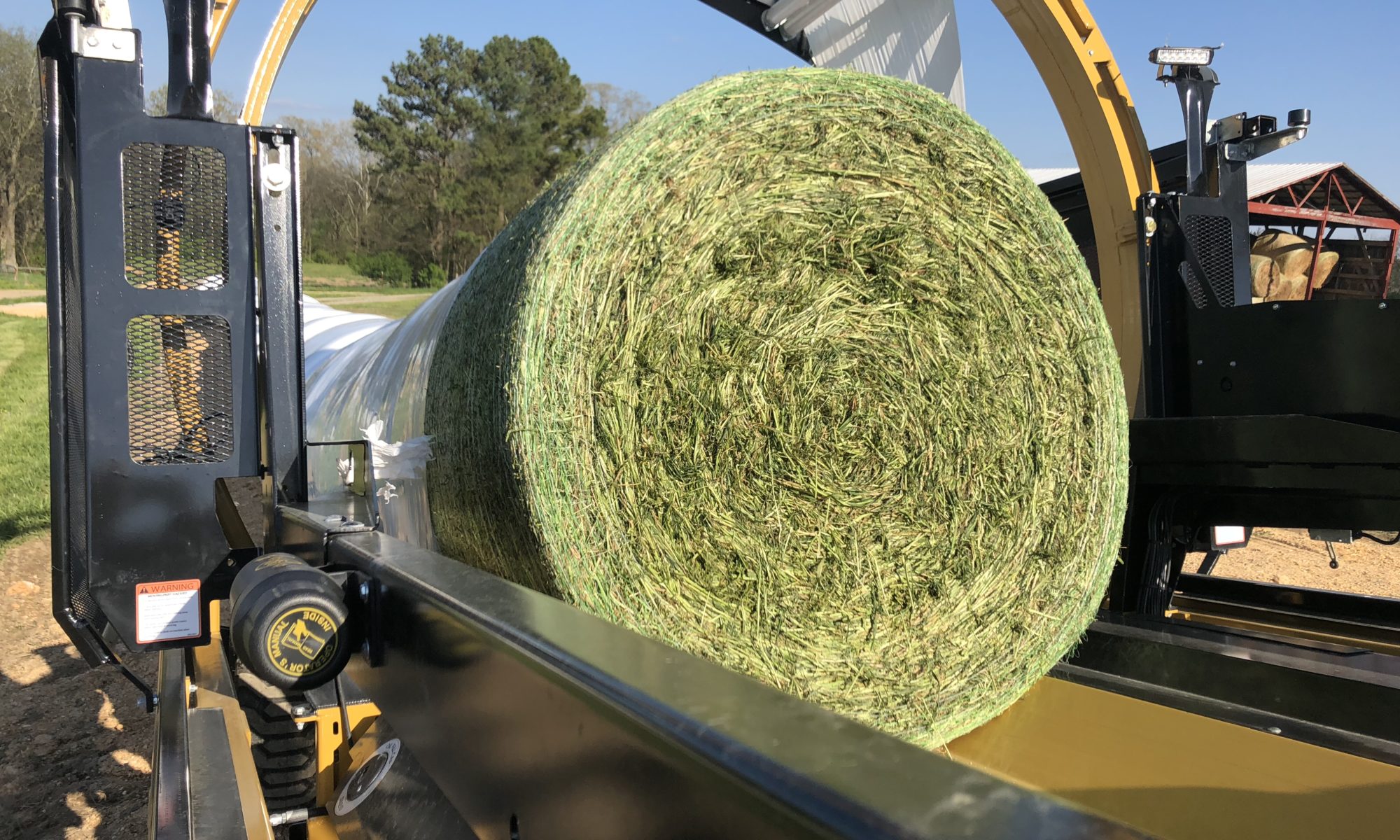

Dr. Gary Bates
Director and Professor
UT Beef & Forage Center
P: 865-974-7324
One of the forage production methods that has changed during my career is the process of making haylage. My first years here at UT, making haylage from a forage crop was almost exclusively done by dairy producers, usually with either alfalfa or a small grain. It would be cut, wilted, chopped, and then packed into either a bunker or upright silo.
Over the last couple of decades machinery has been developed to allow producers to make haylage out of round bales of forage. First came the individual bale wrappers, making what looked like big marshmallows in the field. Afterwards came the in-line wrappers, which make a long tube of wrapped bales, set end to end. The advantage to the in-lime wrappers was that it took less plastic, since the end of each bale didn’t have to be covered.
This new process provided many beef producers across the state the opportunity to make haylage. It did not require a bunker silo or a forage chopper, only the wrapper, which often could be rented.
The fermentation process
The key to making haylage is to get it wrapped so air is excluded from the bale. After a couple of days of being wrapped, all the oxygen is used by microbes and the environment becomes anaerobic, meaning without oxygen. Bacteria that live without oxygen begin to grow (primarily Lactobacillus species) which use carbohydrates in the forage to grow and function. One of the by-products they produce is lactic acid, which causes the pH of the bale to drop. The lactic acid and low pH is what allows the haylage to be stable for long periods of storage.
Keys to making good haylage
Although making good round bale haylage is not terribly difficult, there are a few things to pay attention to in order to keep the process from going off the rails.
- Proper moisture at wrapping – haylage has a higher moisture content that hay does. The proper moisture content for good fermentation is between 40 and 60 percent. Too little water and the fermentation process will be limited. Too much water and the bacteria cannot produce enough lactic acid to drop the pH, and unpalatable bales will be produced. This moisture range fits well into an operation, since a producer can start baling on one side of the field at 60 percent moisture, then finish on the other side when the forage is closer to 40 percent.
- Keep bale airtight – The key to fermentation is having all of the oxygen excluded from the bale. If the anaerobic stage is not reached, then the Lactobacillus bacteria will not start to produce lactic acid. Be sure to use 4-6 layers of plastic on the bales, and check to make sure no holes have been made in the plastic.
- Cut forage at the proper stage of maturity – Even though haylage tends to be more palatable than dry hay, there is nothing in the fermentation process that will increase the protein and energy content of the crop. If you cut the crop when it is young and immature, it will be a highly nutritious haylage. If you wait to cut and wrap until the crop is old, stemmy, with lots of seedheads, the resulting haylage will not be as good of quality. Poor quality in, poor quality out.
Round bale haylage provides the opportunity to reduce drying time for production, often resulting in more timely harvest of a forage crop. Understanding the fermentation process and paying attention to a few specific details can help ensure success in making your next crop of round bale haylage.
